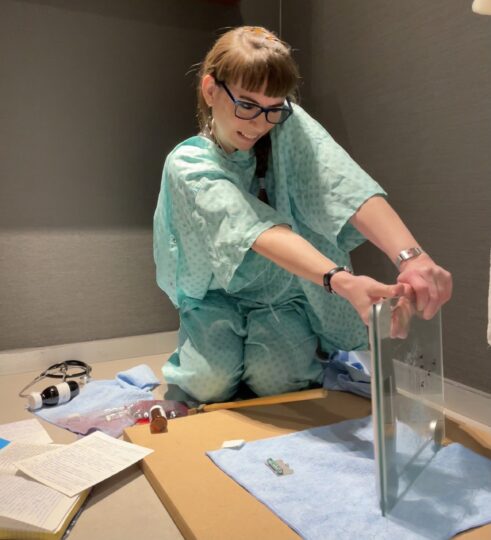14/07/23
Phototherapy: manufacturing a new truth
Photographers Rosy Martin (b1955) and Jo Spence (1934-92) met in 1983 when attending a series of co-counselling training courses. Working together during an exchange counselling session, they conceived of the idea of role-playing and photographing aspects of their identities that had been either hidden or denied. Spence explains:
‘Traditionally, the portrait is typified by the notion that people can be represented by showing aspects of their ‘character’. We understand the portrait differently. Instead of fixity, to us it represents a range of possibilities which can be brought into play at will, examined, questioned, accepted, transformed, discarded. Drawing on techniques learned from co-counselling, psycho-drama and the reframing technique borrowed from neuro-linguistic programming therapy, we began to work together to give ourselves and each other permission to display ‘new’ visual selves to the camera.’ (Martin and Spence, 1986:172)

They went on to develop this methodology, giving it the name ‘re-enactment phototherapy’ (Martin, 2009:40). ‘Photographs,’ Martin notes, ‘offer up the possibilities of a slippery surface of meanings and potential narratives for the viewer,’ (Martin, 2009:35) while, in terms of the possibilities of therapeutic performativity, the 19th-century empiricist philosopher Edmund Burke had already observed: ‘On mimicking the looks and gestures of the angry, or placid, or frightened, or daring men, I have involuntarily found my mind turned to that passion, whose appearance I endeavoured to imitate.’ (Burke, 1837:60) The key to making this method therapeutic, then, is to re-enact a transformation, or to find and engage a nurturing part of the self to challenge the punishing inner critic. By performing this re-enactment, it comes to be real. As Martin explains: ‘Re-enactment phototherapy is about making visible process, change and transformation, by going to the source of an issue or an old trauma, re-enacting it and making a new ending; a new possibility; a new way of being, visible.’ (Martin, 2009:41)
Having been in therapy for three-quarters of my life, working in the arts sector, and having recently been discharged from yet another inpatient stay on a psych ward, I was curious to know more about Martin’s and Spence’s method, and so when I saw that Martin was holding a two-day phototherapy workshop at the Centre for British Photography, London, this April, I knew I had to sign up. After a very early start, to get down to Westminster from Hertfordshire, I arrived at the centre unsure of what to expect. We were a small group of 12 participants, and Martin made it clear from the start that it would be very hard work, not to mention exhausting. After talking a little about the methodology, and reiterating how, in just two (long!) days, we couldn’t expect more than an introduction, we got started with a warm-up exercise.
Read my full essay for Photomonitor here